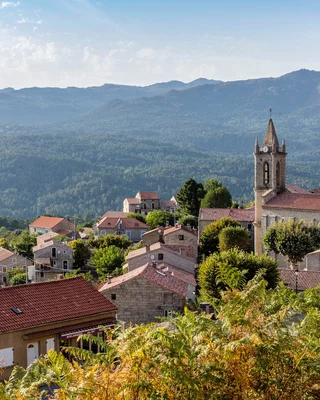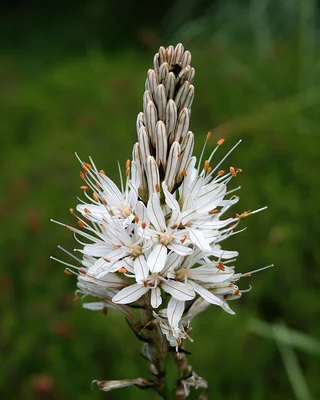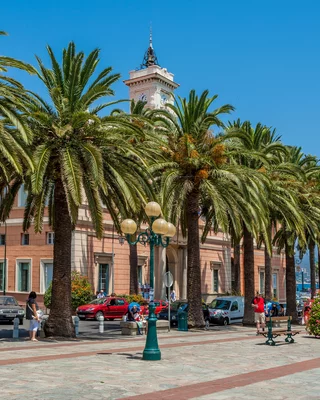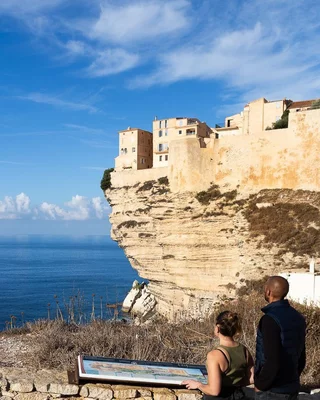The history of chestnuts in Corsica
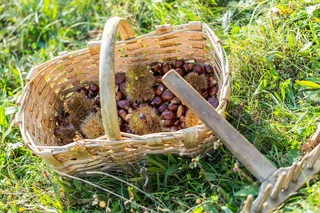
Chestnut growing in Corsica has a long history. Present in Corsica since the 16th century, castaneiculture (chestnut growing) has left its mark on the region's identity. Widely used in Corsican culinary specialities, discover the uses of this unusual fruit!
Chestnut: How to use it in Corsican cuisine?
Chestnut: Beer, soup and jam
Chestnuts are widely used in Corsican culinary specialties! It adds a distinctive flavor to dishes and desserts . Highly prized by wild boar, the taste of chestnuts can also be found in their flesh.
In dishes, chestnuts accompany foie gras, dried meat, pork and poultry. Chestnuts also add a touch of flavor to gourmet veloutés, and celebrate the passage of autumn to winter.
On the Isle of Beauty, there are many by-products. The fruit is used to flavor alcoholic beverages such as beer, wine and liqueurs, and is also used to make chestnut cream. Chestnuts can also be roasted over a wood fire, or boiled in water.
In flour : bread, polentaand fritters
Turned into flour, chestnuts are the basis for many desserts: flans, tarts, pastries and cakes... Many pastry shops and restaurants in Corsica include them on their menus. Now's your chance! If you're in Corsica in winter, you may have the chance to try a traditional dish that Corsicans love: chestnut flour polenta, figatellu, fresh brocciu (Corsican fromage frais), and fried egg. You'll be pleasantly surprised by this mix of flavors, hot and cold, sweet and savory.
In 2006, chestnut flour was awarded the AOC quality label, and since 2010 has held the PDO "Farine de châtaigne corse - Farina Castagnina Corsa ".
A region of fairs and chestnut groves
Since its launch in 1982, the Bocognano Chestnut Fair has established itself as one of Corsica's most significant fairs, attracting large numbers of visitors every year. This event has become an essential rendezvous for chestnut lovers, as well as for the island's producers and craftsmen.
Over a three-day period, more than 150 producers and craftsmen gather in a heated 3,000 m² area to celebrate the chestnut and its many variations. Each year, the fair welcomes over 20,000 visitors to discover the countless uses of this emblematic fruit. The event is held outside the summer season, underlining its economic importance for the Ajaccio and Gravona regions.
The Chestnut Fair is not just a celebration of this local fruit; it also aims to promote Corsican agriculture and culture, playing a crucial role in the structuring of the island's chestnut industry. The program is rich and varied, including a regional chestnut flour competition, as well as several symposia and conferences. Visitors can also take advantage of culinary demonstrations, children's activities and concerts, making this event an essential part of the Corsican autumn season.
Where can I pick chestnuts around me?
If you want to pick chestnuts, October-November is the right time. You'll find them on the mountain roads. Head for Castagniccia in Haute Corse and keep your eyes peeled in the undergrowth! You'll enjoy the magnificent colors of Corsican autumn. If you're in Cap Corse, Alta Rocca, Niolo, Deux-Sévi or Nebbio, you'll also find them. Equip yourself with closed shoes, gloves and a good stick, and look out for the chestnut trees.
It was to combat famine that the 16th-century Romans obliged the islanders to plant chestnut trees: 4 per person per year. Once dried, the chestnuts are transformed into flour, a staple food that can feed the whole family, hence the name given to the chestnut tree: the breadfruit tree. After the First World War, interest in this staple virtually disappeared, and chestnut groves were gradually abandoned. But the passion of the growers has revived the crop and brought the mills back into operation, despite the obstacles posed by climate change and cynips bites. Thanks to unique traditional know-how, Corsican chestnuts are very much in vogue today, recognized for their health benefits as they are low in fat, full of protein, fiber, essential amino acids and gluten-free! Today, production reaches 1,200 tons a year (85% of which is used for processing into flour).
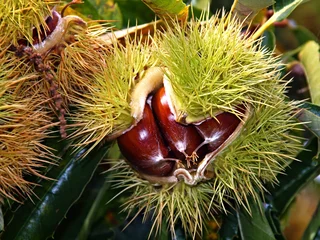
Our recipe: Chestnut flour cake
Ingredients
- 115 g chestnut cream
- 3 whole eggs + 2 yolks
- 100 g semi-salted butter
- 90 g chestnut flour
- 50 g caster sugar
- 300 g powdered sugar
- 5 marrons au naturel (tinned or vacuum-packed)
- 50 g pine nuts
- 2 tbsp. dark rum
- 1/2 sachet baking powder
Steps
- Melt the butter in a small saucepan over low heat. In the bowl of a food processor, whip the chestnut purée with the 2 egg yolks to obtain a smooth paste.
- Gradually whisk in the melted butter, sifted flour and baking powder. When the dough is smooth, set aside in a bowl at room temperature.
- Place a heatproof bowl over a pan of barely simmering water. Break the 3 eggs into the bowl and whisk with the caster sugar until the mixture has risen (at least 3 min), then pour into the bowl of a food processor and whisk again, until the mixture doubles in volume. Fold into the chestnut mixture.
- Preheat oven to 180° (gas mark 6). Line the bottom of a rectangular baking tin with parchment paper. Crumble in the chestnuts. Pour in the batter and bake for 30 min.
- Dry-roast the pine nuts in a frying pan. Mix the rum, 2 tablespoons water and powdered sugar in a bowl.
- Remove the cake from the oven, leave to cool, then unmould. Coat the top with rum glaze, smoothing with a spatula. Sprinkle with pine nuts and leave to cool completely before serving at room temperature.

